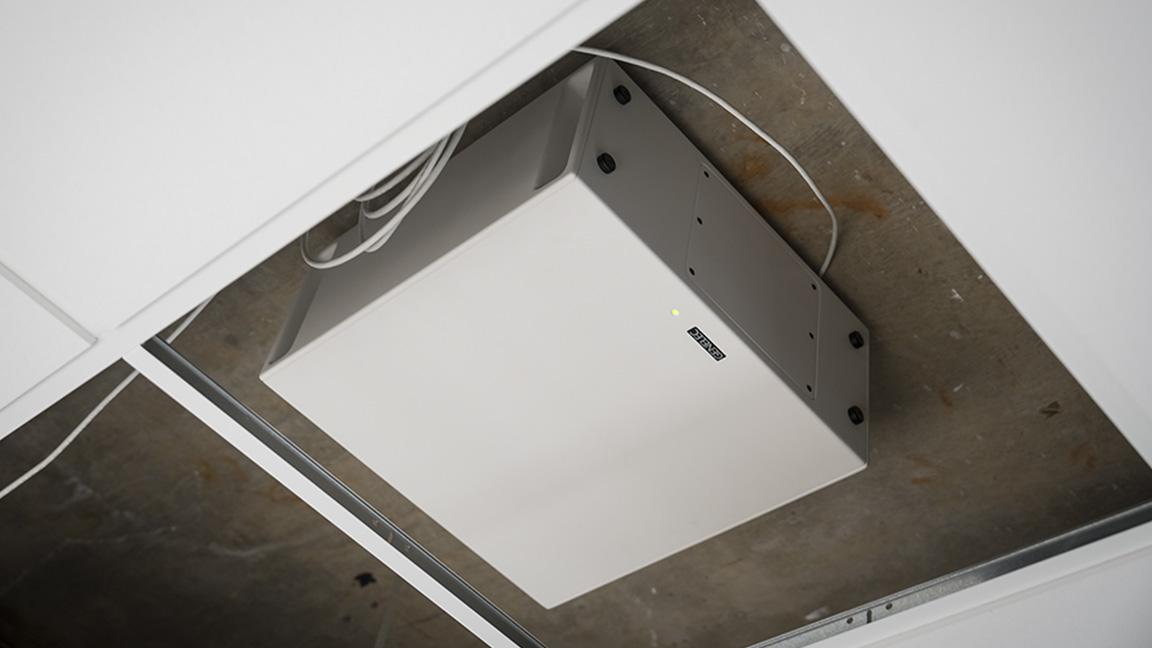Subwoofers: Pick Your Spot
Don't just throw it in the corner—proper placement is crucial for best audio results.

From restaurants to museums and more, rooms may have varied audio requirements depending on the customers’ use. And contemporary creative content increasingly has theme music or sound effects as part of the mix. So, unless your content is limited to the spoken word or banjo music, subwoofers play an important role in the complete audio picture in an installation.

A subwoofer that has a fairly typical operating bandwidth from 25-100Hz covers wavelengths as long as 45 feet down to 11 feet. In absolute terms, we can say these long wavelengths can bend around objects unimpeded, making placement flexible, though this doesn’t mean its performance is linear wherever you sit or stand in different size rooms.
What's the Ideal?
Low frequencies have a bit of a mind of their own. Rooms that are small, say 10x20 feet with a low ceiling, will react quite differently than a room with four times the square footprint and a high ceiling.
The flexibility in placement really has to do with a lot of different factors depending on application. If a subwoofer is part of a controlled sound field where stereo imaging is required, the sub may very well be located close to the stereo speakers. However, a subwoofer that is part of a distributed sound field may only need to be placed in a convenient and safe location and gain staged to fill the space with low frequencies that the other speakers cannot reproduce.
Without being too glib, the ideal placement for a subwoofer is the place that works for as wide a listening audience as possible. Subwoofer placement covers a lot of differing criteria, and it certainly depends on the installation situation as well as the client appeal. I once saw a sub next to a glassware wash tub at a bar in NYC. I’m not sure how that became the "ideal” placement, but there it was.
Seriously, it’s hard to define the ideal placement for a sub. For those types of rooms that one would consider higher quality, usually the best place to not place a sub is along the mid-line of the front wall. Usually, a third of the way left or right from the center will work well.
A daily selection of the top stories for AV integrators, resellers and consultants. Sign up below.
Sometimes, subs get placed into a corner reading somewhere that is where the most in-room gain will be achieved. However, this corner location will also drive all the room modes—the collection of resonances that exist in a space—equally, which can be a nasty tradeoff.
Lows Higher Up

There are some special installation considerations unique to subwoofers. Sound travels faster in solids compared to air. Isolation from plywood flooring on joists may improve the sound quality in commercial or residential applications.
That said, a subwoofer on a concrete substrate may need less isolation simply because the mass of the concrete is so stiff. No matter, airborne low frequencies may be hard to contain in rooms where walls are made of single layer sheet rock on studs. Your neighbor may complain no matter what you do if you turn it up too much.
[Sustainability: A Pro AV Progress Report]
Subwoofers can even be ceiling mounted. There are dozens of Dolby ATMOS commercial theaters and dubbing stages that have ceiling-mounted subs at the rear of the space. For less theatrical commercial installations, a ceiling-mounted sub can be a real space saver, assuming of course that getting the wiring in place doesn’t present too many obstacles. Some manufacturers, including Genelec, are offering single-cable solutions that carry power, audio, and control to IP-based devices, including subwoofers.
The ceiling may have some appeal, but care should be taken in consideration of maintenance or service. And yes, you had better have safety straps and proper mounting hardware to hold it in place, as well as noting what structural things might vibrate.
Check Your Spec
Finding subwoofers that go down to 14Hz may be appealing on paper—and may be important for impressive high SPL theatrical applications—but for most music applications, a subwoofer that cuts off at 30-35Hz will usually work quite well. Remember that in a closed box, for each halving of the frequency, the driver displacement goes up four times and the amp power requirement is doubled as well. Vented boxes often will be more efficient in reaching the lowest cutoff.
Calibration is absolutely a prerequisite in every situation. Gaining an objective frequency response as well as level matching goes a long way in making the installation successful. There are some great third-party measurement systems. Room EQ Wizard (REW) as well as SMAART from Rational Acoustics have plenty of depth of programming that, in the right hands, can save the installer a lot of time and increase the likelihood of the best results. Some loudspeaker manufacturers (including Genelec) also have automated calibration services that couple with specific products that will adjust relative levels, equalization, and time of flight to the listening position.
[Genelec Loudspeakers Tell the Story at Cold War Exhibit]
Never under spec a subwoofer. It's a common mistake. Low frequencies are the most difficult to reproduce without distortion as the volume goes up, assuming the main speakers were also specified correctly. The use of one sub may fit a budget, but often using two will give you better coverage (if spaced correctly) and a bit more headroom. It’s also important to place subs where no listeners will be too close to them—booming bass can be very irritating.
One last thought: Some installations require help from the manufacturer of certain items in the signal path. Pick a company that is well recognized for providing accurate product support when building small or large systems.
Will Eggleston is the marketing director of Genelec, Inc.

